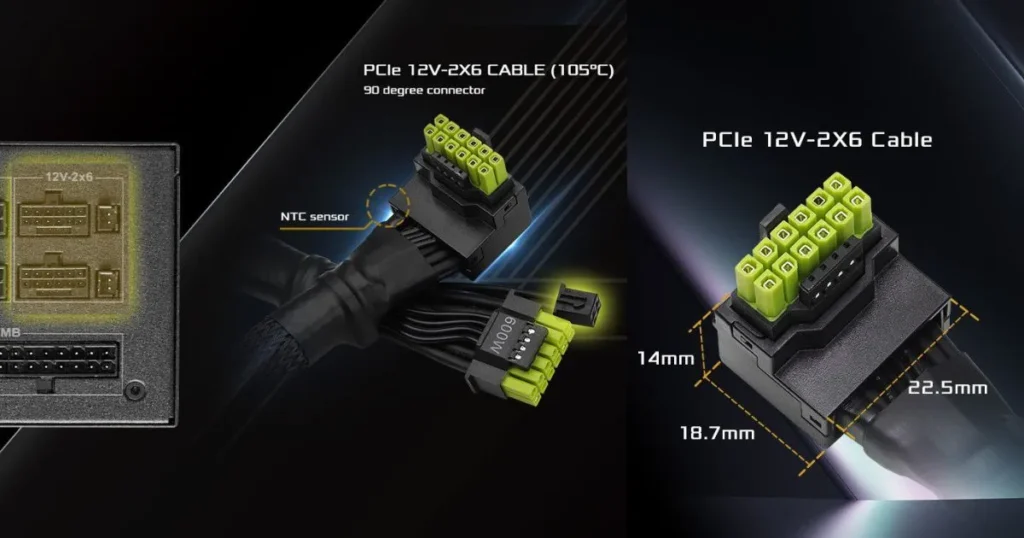Innovation in Safety: ASRock’s New Power Cable Monitors Itself
In a direct response to the ongoing issue of melting power connectors on high-end graphics cards, ASRock has launched a new, proactive solution: an L-shaped 12V-2×6 power cable with a built-in NTC temperature sensor designed to warn users of potential overheating before it leads to a catastrophic failure.

This move comes shortly after the first reported case of a melted connector on an ASRock Radeon RX 9070 XT GPU, highlighting the industry’s urgent need for more robust safety measures beyond simple physical design changes.
How the Smart Cable Works
The core innovation is the integration of an NTC (Negative Temperature Coefficient) thermistor into the cable’s connector. This common PC component detects temperature increases by measuring a decrease in electrical resistance. While the exact method of alerting the user isn’t detailed, such a sensor could theoretically interface with motherboard software to trigger a warning message or alarm if unsafe temperatures are detected at the connection point.
Beyond the sensor, ASRock has also adopted a color-coded tip system. The cable features a green tip that is designed to be completely hidden from view only when the connector is fully and properly seated into the GPU. This visual check is intended to prevent one of the root causes of melting: partially inserted connectors that lead to high electrical resistance and intense heat buildup.
A Solution to a Persistent Problem
The 12VHPWR and its updated 12V-2×6 standard have been plagued by melting incidents since their introduction with NVIDIA’s high-wattage cards. While the updated 12V-2×6 design made the sense pins shorter to ensure a secure connection, incidents persist, often linked to user error like using low-quality adapters or daisy-chaining power cables.
ASRock’s cable represents a shift from passive to active prevention. Instead of just hoping the connector is plugged in correctly, it adds a layer of monitoring to catch problems before they destroy a valuable GPU.
The Catch: Price and Compatibility
This enhanced safety comes at a cost. Reports from Japan list the cable at approximately 5,980 Yen (around $40 USD), a significant premium over a standard power cable. This high price point invites comparison to other solutions on the market, like the Thermal Grizzly WireView, which offers similar monitoring features plus a small display for voltage and temperature readouts for a slightly higher price.
Furthermore, the power cable is designed primarily for ASRock’s own power supplies, though it may be compatible with others. This emphasizes the importance of always using cables recommended by your specific PSU manufacturer to avoid compatibility issues that could themselves be a safety risk.
Also, Read
- Fake AMD Ryzen 7 9800X3D CPU Sold on Amazon: How to Avoid Scams
- ASUS ROG Astral RTX 5090 Catches Fire After Power Stage Failure
- First AMD Radeon RX 9070 XT Reports Melted Power Connector – Here’s What Happened
The Bottom Line
ASRock’s new cable is a welcome and innovative step towards solving a frustrating and expensive problem for PC enthusiasts. While its high price may limit its appeal to owners of the most expensive GPUs, it sets a new standard for safety that other manufacturers will likely follow. For now, the best advice remains: use quality power supplies, avoid adapters, ensure every connection is fully clicked in, and avoid sharp bends near the connector.